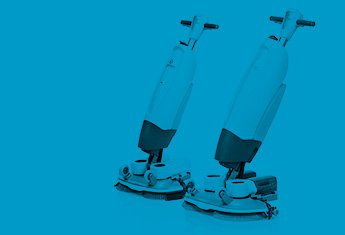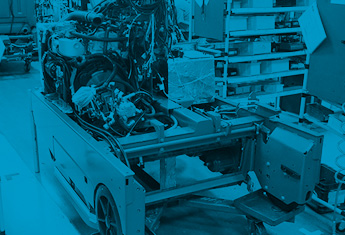Your shopping cart is empty.
Should You Disinfect Your Facility's Floors?
Posted in Cleaning Solutions, Sustainability, Productivity, Health & Safety, Innovation & Technology,
The term cleaning and disinfecting are two different terms with different definitions, yet they are commonly used interchangeably. In short cleaning is described as the removal of dirt while disinfecting means using chemicals to kill germs.
A common question we've been receiving from a lot of people is should I disinfect my floor and how do I do that? In this post we address this question and provide other tips for cleaning and disinfecting your floors.
High Risk vs Low Risk Surfaces
When thinking about what areas to clean, it's easiest to categorize and prioritze surfaces into two sections: high risk and low risk. High Risk is best defined as areas that receive contact frequently from numerous people. Typically these surfaces are: tables, doorknobs, light switches, countertops, handles, desks, etc.
Generally speaking, the floor is deemed a non-critical surface. Meaning it's low risk for infection. We realize that the situation may be changing and new data's coming in all the time, but generally that's the most appropriate risk level for the floor, non-critical, low risk.
The other aspect to think about is disinfectant is in demand right now in, short supply, and the supply chains are trying to catch up. So using that much disinfectant on a large, low-risk surface probably doesn't make the most sense.
What are the appropriate steps for applying disinfectant?
If you decide to disinfect your floors be sure to clean the floor first from any excessive dirt, debris or organic substances. Adding disinfectant to a dirty floor doesn't do any good. Routine and proper cleaning is still required and is a vital piece in the process prior to applying disinfectant.
Once your floor is thoroughly cleaned, you can apply disinfectant. Not all disinfectants are the same so it is important to prepare the solutions per guidelines on the label and instructions provided.
What tools should I use to apply disinfectant? Can I use my auto scrubber?
As always when handling any chemical, safety is priority number one. Make sure to wear the proper protection equipment such as gloves, mask or safety glasses when preparing or using your solution. When applying the disinfectant most common ways to apply is by using a pump sprayer, electrostatic sprayer and a traditional mop or mop machine.
Auto scrubbers are also okay to use, however, there are several things to keep in mind when applying. Typical chemicals require a dwell time of up to 10 minutes (times vary per solution) to do their job. When using an auto scrubber the solution is only in contact with the floor for 2 to 3 seconds. That's not enough to do any good and have an impact on disinfecting the floor.
A couple quick tips to be most efficient with your auto scrubber when applying disinfectant are:
- Set the auto-scrubber to double-scrub by raising or removing the squeegee
- Set solution flow on lowest possible solution flow rate
- Scrub at a rate to distribute disinfectant across scrub path
The key is we got to get the disinfectant on the floor for the appropriate amount of time and then it needs to air-dry and dwell per the label. And then the final step of the process is to run the scrubber and clean the floor as you normally would to remove any excessive residue from the floor.
Keep in mind while you're doing this, floors will be wet, allowing the chemical to thoroughly disinfect the surface. It's best to not do it at a time when there's high traffic or customers around; however if you must, be sure to rope off the area and put up signage. Slip and falls can be a big issue with wet floors and you want be sure you're keeping everyone safe. Additionally, make sure to thoroughly clean your machine and properly dispose of any extra chemical solution. Effecitive cleaning and proper removal of residue helps prevent machine irritation and premature wear.
In conclusion, disinfecting of floors is certainly not necessary. With the proper routine cleaning, your floors should be in a good shape and safe for your customers and staff. If your facility does require it be sure to follow these steps to ensure you're doing if safely and effectively.
RELATED LINKS




